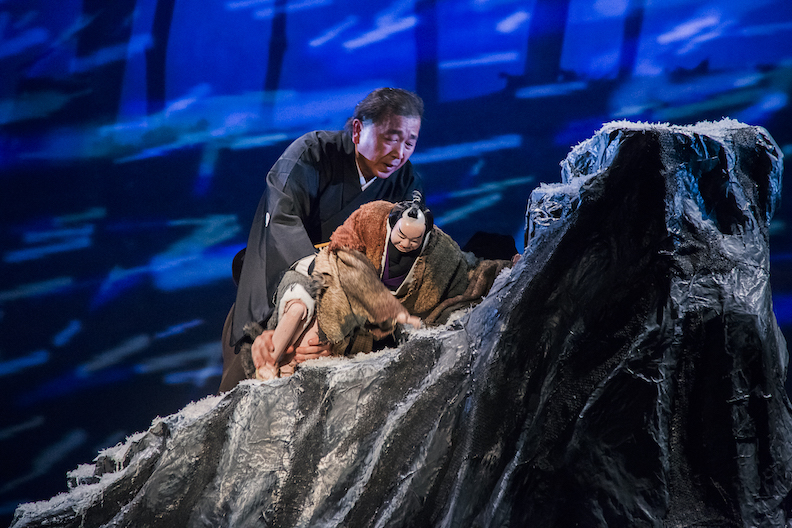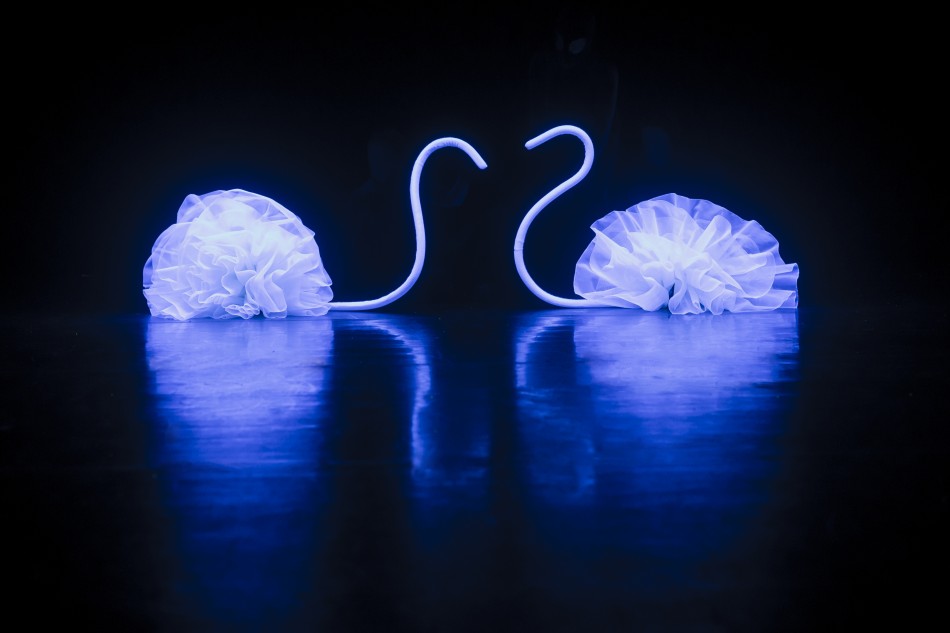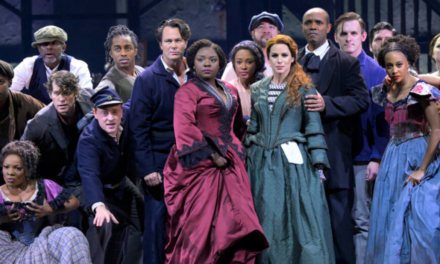by Samuel L. Leiter
Anyone even slightly familiar with premodern Japanese literature should recognize the words “shank’s mare,” which form part of A Shank’s Mare’s Tour of the Tōkaidō, the English title for Jippensha Ikku’s Tōkaidōchū Hizakurige, a beloved picaresque novel of the early nineteenth century. If their familiarity with that book’s often filmed and dramatized depiction of the antics of Yaji and Kita, the two scruffy travelers making a pilgrimage to Ise Shrine, inspires them to visit Shank’s Mare, a new puppet play at La MaMa, they’re bound to be both disappointed and charmed.
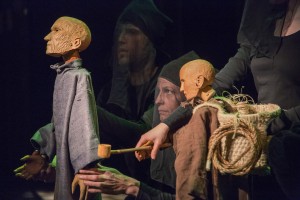

Puppets (ningyō) are manipulated by a single operator—unlike bunraku, which uses three operators—sitting on a tiny wheeled cart (kuruma) with the puppet’s feet attached to his own. He uses his right arm to control the puppet’s right arm and hand, and his left to handle the left arm and head.
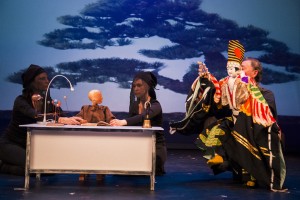

The program begins with the ritual dance Sanbasō, which purifies the space. Two nearly identical Sanbasō puppets, dressed in colorful formal robes, dance rhythmically (to recorded music) before a background projection of a bonsai pine tree.
Shank’s Mare is ambiguous, dealing with themes of parental love, questing, death, salvation, and time; my guest suggested it’s all a dream, but even then it remains obscure. Its interest lies mainly in its performative elements and the mood they create; there’s little attempt to tie its narrative together in an easily digestible form. Performed entirely without words, it’s accompanied by the haunting music of Bill Ruhle on hammered dulcimer and percussion, and Chieko Hara on Japanese flute and shamisen. Down right is a miniature landscape showing a modern city, ancient houses, and a thinned out forest set on a revolving disk. Someone records the miniatures on video so that the images appear on the projection screen, providing moving backgrounds to the downstage action; such scenes are among the most memorable. There are also prerecorded projections, many showing old astronomical maps, and the presence of a shooting star.
The often slow-moving piece shifts back and forth between two sets of characters; on the one hand, there’s a samurai and his adventures, on the other a sage-like, white-haired and bearded astronomer and his young female apprentice or daughter. Throughout, a golden woman resembling the benevolent goddess Kannon makes brief, ritualistic appearances. A large stag with huge antlers also has a sacred, if elusive, role. The samurai’s beloved son is killed, turning him to a life of crime, for which he winds up in hell. His having once refused to kill a spider gives him a chance to escape via a spider’s thread, but his selfishness in hogging this lifeline returns him to perdition. (This seems a direct steal from Akutagawa Ryūnosuke’s short story, “The Spider’s Thread.”) Meanwhile, the old man and his apprentice endure the hardships of a long journey, even though we have no idea where they’re from or where they’re going. Eventually, the two plot strands somehow come together in a modern city, but what we’re supposed to have learned from them remains unclear.
Much of Shank’s Mare, which also includes a few laugh-worthy bits, is worthy of interest, especially for puppetry aficionados. I suspect, though, there’ll be some, like me, who would have preferred the same methods be applied to the story of those two scamps, Yaji and Kita, as they travel down the Tōkaidō in the Shank’s Mare of cherished memory.
Shank’s Mare
La MaMa Experimental Theatre Club
66 West Fourth Street, NYC
Through November 15
Photos by Ayumi Sakamoto


